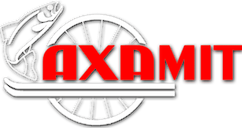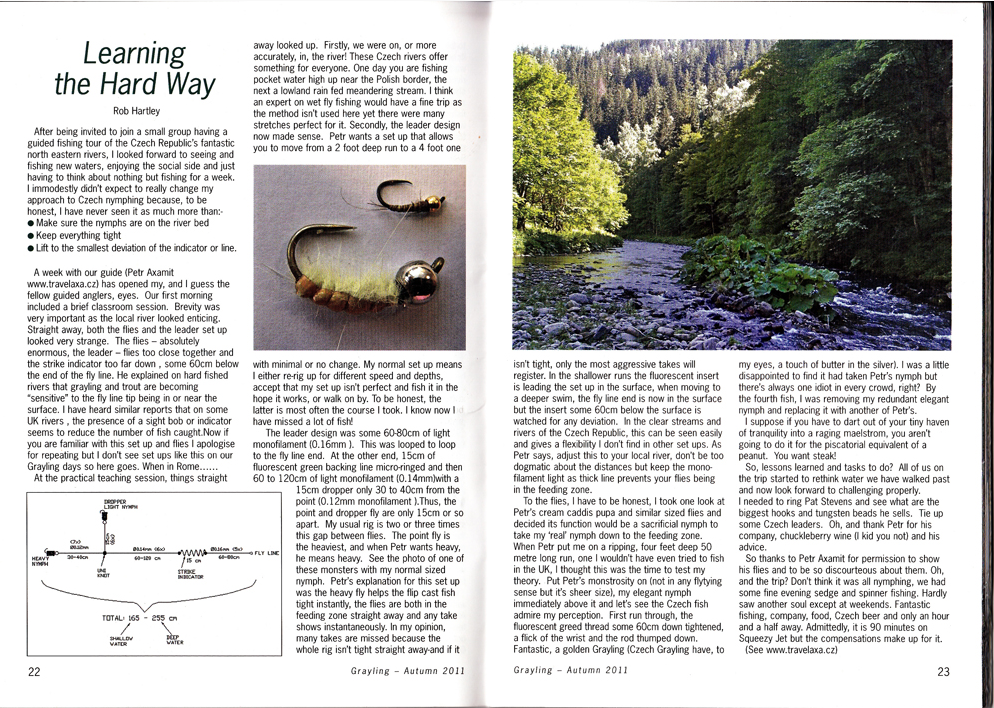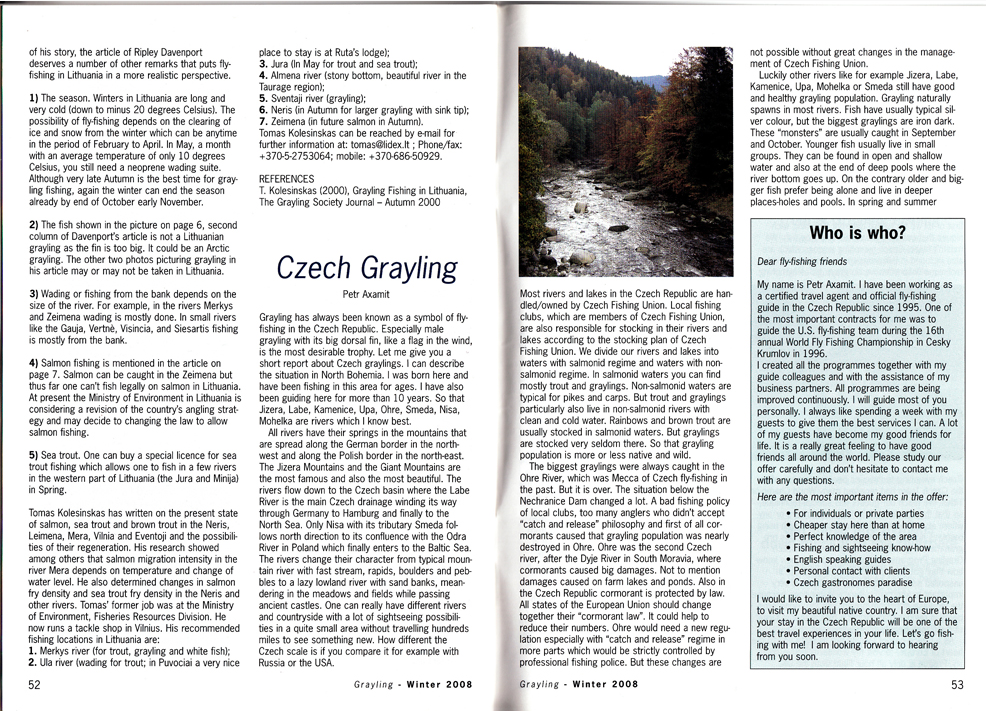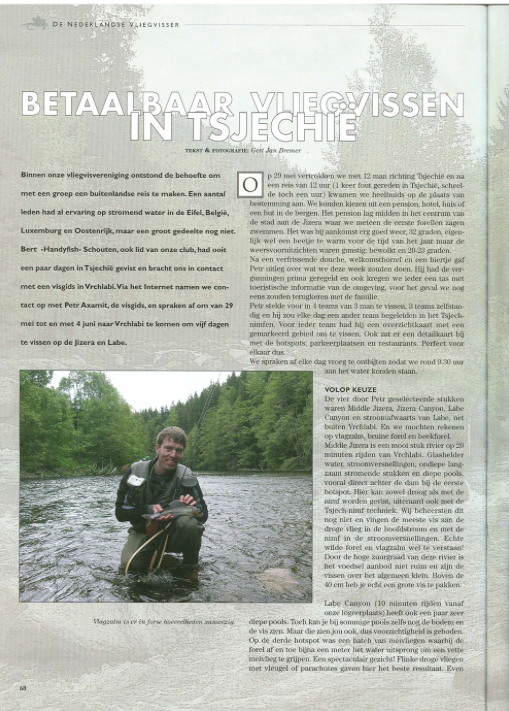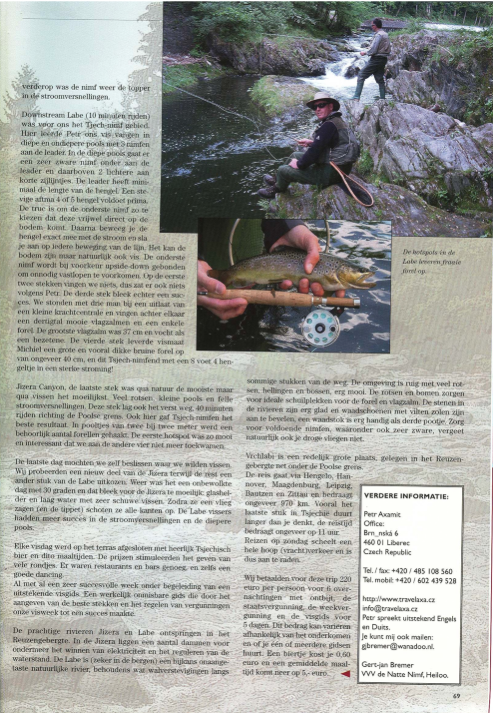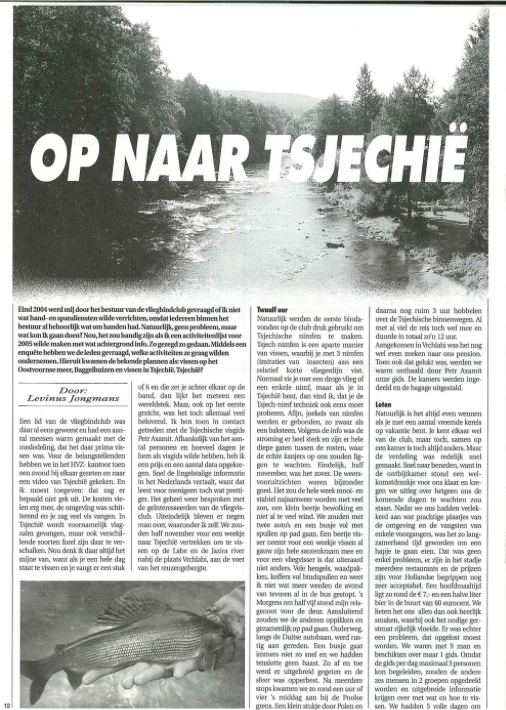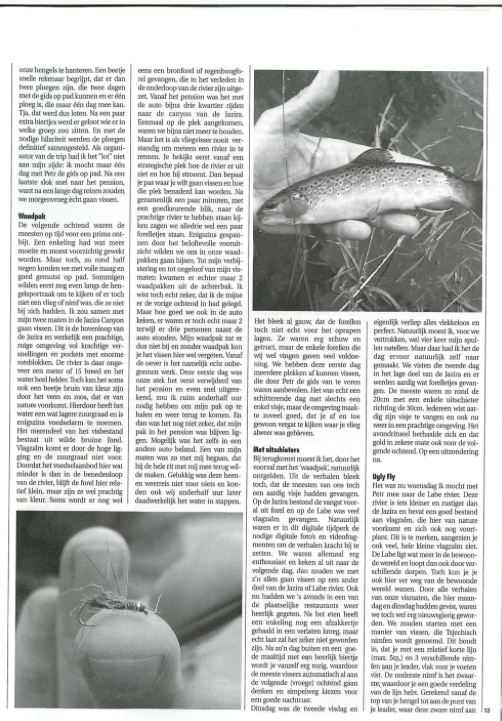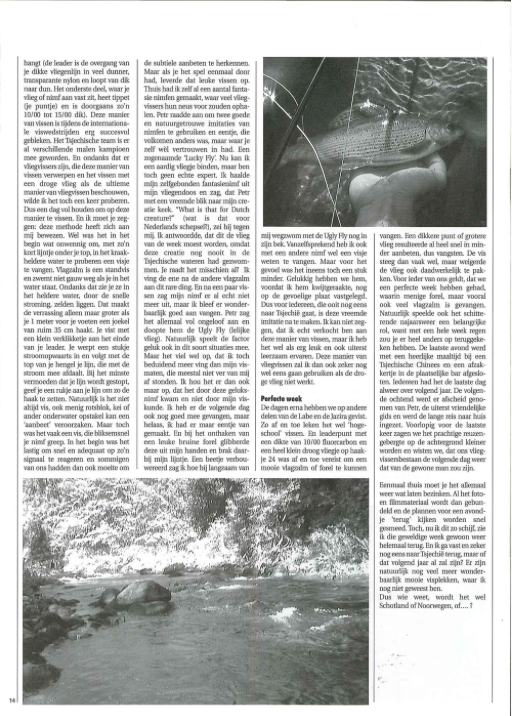The idea, the preparation, the works.
The idea came from a couple of fishing buddys who have been flyfishing for more than 15 years both nationally and internationally; there whas some flyfishing to be done abroad.
But where? The solution whas nearby. Last year a couple of clubmembers had travelled abroad and came back very enthousiastic. When next year more members went it was clear: the 3 fishing buddys were going also.
The desision whas made and the money transferred months in advance but the spirit was not yet there amongst the buddys. When we received last years pictures spirits were raised but summer vacations soon took over.
When departure came nearer, there where boxes to be filled with the right flies. There was the experience from last years visitors, the internet and fishers magazines we reconsiled. Most importantly there were trips to the fishingshop to be made to make sure no gadgeds of the most importance were left out. Some proofed to be absolutely unnacisary but the shop owner is a kind man and he has to make a living too! E-mails went and came, the “schooltrip” feeling took hold, in other words, we were about to leave.
The trip started one sunday moring at six o´clock in the morning at a gasstation. We met up with 7 fishingbuddys with all their gear spread over 3 cars, navigators were programmed and just to be sure oldfashionate roadmaps were brought in case the satelites would let us down. Mobile numbers were exchanged, and we planned stops to strengthen the inner body although home had provided us with enough food too last us a week without starving to death. The thing is that pubs provide an essential part of the trip namely keeping our physical condition at level. Our trip went well although some emergency moves had to be made to miss a horse trailer with a flat tire and some spots were honoured with a second visit like a 3 kilometer long tunnel we took twice. This was all to be blamed on the electronical devices and incorrect roadmaps.
And now what it was all about: flyfishing. To put it in words, the size of the fish was not great but the numbers we cought them in was some days huge. The fish were strong and beautiful. Nature and its rivers was breath taking and many times I found myself being the last person in the world with only a buddy miles away. Fishing in more rural places was very pleasing too. It was the first time in my flyfish career that I had to run from a helicopter. Fishing in the middle of small villages or at the foot of a dam is pretty special too. These are all virtues of fishing abroad and I mean that in the most positive way. All during our trip we had great weather so we could mostly fish `dry`. This to me is the best way to flyfish. Just to see a trout or a grayling standing in the water, presenting the fly and see it being take still gives me the greatest trill. I tend to write I and Me but I am sure it was the same for al my buddys. Athough we al have our preferrences, nimph or fly it all worked in this far country.
I did not name my buddys or mentioned were we went. Not to make this the prize question but to make it a different kind of journal. Wheter I succeded is up to the reader. But it is no secret were we went. It used to be behind the iron curtain namely the Tsjec Republic in Vrchlabi to be exact. My mates were Maarten, Levinus, André, Hans, Floor, Enrico en Gerard and no we are no secret agents. One can still see the results of the falling of the gurtain but it is an upcomming country both for fishing and for visiting. The people are most kind with on top of the bill our guide Petr Axamit a ingeneer by profession but a long time flyfisher by heart and a ski guide in winter. He has been fishing all over the world and he went to great lenghts to ensure we had the best time and to share his knowledge. His conversations over drinks were perfect day endings. The spots he picked including the secret ones we are not supposed to talk about even in the Netherlands were excellent. Every thing surrounding the fishing was splended too, the cheap fishing shops, the pubs, the food. This summs up one great trip with great mates in and out of the water, so thanks again guys and hope to see you soon on a next trip.
For the Great Lodge Internet Magazine, Jackson, Wyoming, USA
The Czech Republic, a small country in the heart of Europe, can offer a lot of interesting sights. The cultural heritage is very rich, the famous architecture, which can’t be found only in Prague and, of course, a beautiful landscape, admired by tourists and anglers. Everything is close together. The scale is quite different than in the USA. It’s about 400 km (248 miles) from the north border to the south border. It means you can see much more in a shorter time than you could expect. Fishing under a medieval castle in the morning and than the visit of the castle in the afternoon isn’t anything unusual.
The Czech rivers and lakes are divided into regions with a salmonid regime (trout waters) and regions with a non-salmonid regime (no-trout waters). Two groups of these regions have their own regulations and permits. In addition to this, it is required the Czech angling license which is valid for both groups. Let me tell you more about trout waters.
The fishing season starts at the middle of April and lasts till the end of November. May is the best time for trout fishing, or the 1st half of June and the 2nd half of August. The brown trout and brook trout could be taken till the end of August. The most suitable months for graylings fishing are September and October.
You can catch any number of fish but you can take just 4 pieces of salmonid fish with you. Whenever you keep 4 pieces of fish you have to stop fishing. In one week the angler is only allowed to go three times to the river with the intention of taking the fish. A circle around the date of fishing in the permit will mark this intention. Other times he can only fish by the way of “catch and release”, what he will mark a cross on the date. Minimal size of the most Czech regions is 25 cm (10 inch) for brown trout, 30 cm (12 inch) for grayling, 23 cm (9 inch) for brook trout and rainbow trout. Smaller fish must be released. The size of the fish is the length from the tip of the nose to the end of the tail. Predators in trout waters (pike, pikeperch, perch, eel, etc.) have no restrictions on minimum size. Caught predators cannot be placed back in trout waters.
Fly-fishing and spinning are the most common techniques. Maximum 3 flies are allowed, with the weight in the body only. Floats are not allowed. Wading is possible, using a landing net is obligatory. Spin casting is allowed with lure consisting of spinners, wobblers, twisters, streamers, devons, etc. When spin-casting with spinners, wobblers, twisters and devons only one single, one double or one treble hook may be used. Only one hand-held angling rod is permitted when catching fish in trout waters.
The most famous fishing areas are located in South Bohemia, on the Vltava River, where the 16th annual World Fly-Fishing Championship in 1996 was held. The Vltava River, which could be called “the Czech national river”, starts its way in the Sumava Mountain. The upper part of the river to Lipno Lake has a charming and wild character. Below Lipno Lake the river is much wider but during summer the river suffers from great amount of canoes that disturb fishing. The flow is regulated in the Lipno power station. The whole Vltava valley is in the region of historical medieval castles and towns. The most famous town is Cesky Krumlov, which is protected by UNESCO. Fishing regions with a salmonid regime practically reach down Cesky Krumlov and more downstream there are mostly non-salmonid regions. Further the river flows to the north via Prague to its confluence with the Labe River. After WFFC the Vltava River became more popular abroad and foreign anglers have often visited these places. The number of anglers increases every year and the press around this river seems to be high too.
In the Czech Republic there are many others interesting areas where fishing can be an exciting experience. Some of them are located in North Bohemia. We should mention the Ohre River, the biggest Czech river with a salmonid regime. The Ohre River below the Nechranice Dam is the Mecca of Czech spinning and fly-fishing anglers every year. The biggest Czech trout and graylings were almost caught here. The Ohre River, “The Mother of Czech Fly-fishing Rivers”, is quite a demanding river. It is not so easy to be successful here for the first time.
A lot of anglers start their season traditionally on the Ohre River only. Its banks are quite crowded at 16th April. Sometimes the temperature can drop below zero and start snowing but every angler must celebrate the new season. Everybody looks forward to angling after a long winter. You always meet your old friends here and have a nice chat with them. And of course, as always, you can listen to the typical “fishing fairytales”. When I visited the Yellowstone River bellow Yellowstone Lake in September I had the similar feelings like on the Ohre River at 16th April. The weather was same, the banks were crowded too, and only cutthroat trout can´t be caught on the Ohre River.
The Jizera River is another important river in North Bohemia. We mustn’t forget the Horska Kamenice River, especially its canyon in the lower part not far from the confluence with the Jizera River. All these rivers are smaller than the Vltava River or the Ohre River and so that you hardly catch a “monster”. But the wonderful landscape around the rivers makes up for this handicap. Fishing in the Jizera Valley with its sandstone rock formations and castles is always unforgettable. In the Horska Kamenice Canyon you hardly meet anyone. The trail from the bottom of the canyon to the romantic ruins of the Navarov Castle, which was built on the high rocks above the river, will remind you how wonderful nature’s and life’s eternity. If you like lake fishing, you should visit the Jizera Mountains. Black Nisa Lake is the best brookies lake in North Bohemia. It is a beautiful place, which atmosphere could be mistaken for a Scandinavian lake.
I hope that you will decide to visit the Czech Republic sometimes and you will spend wonderful holidays here.
Tight your lines!

